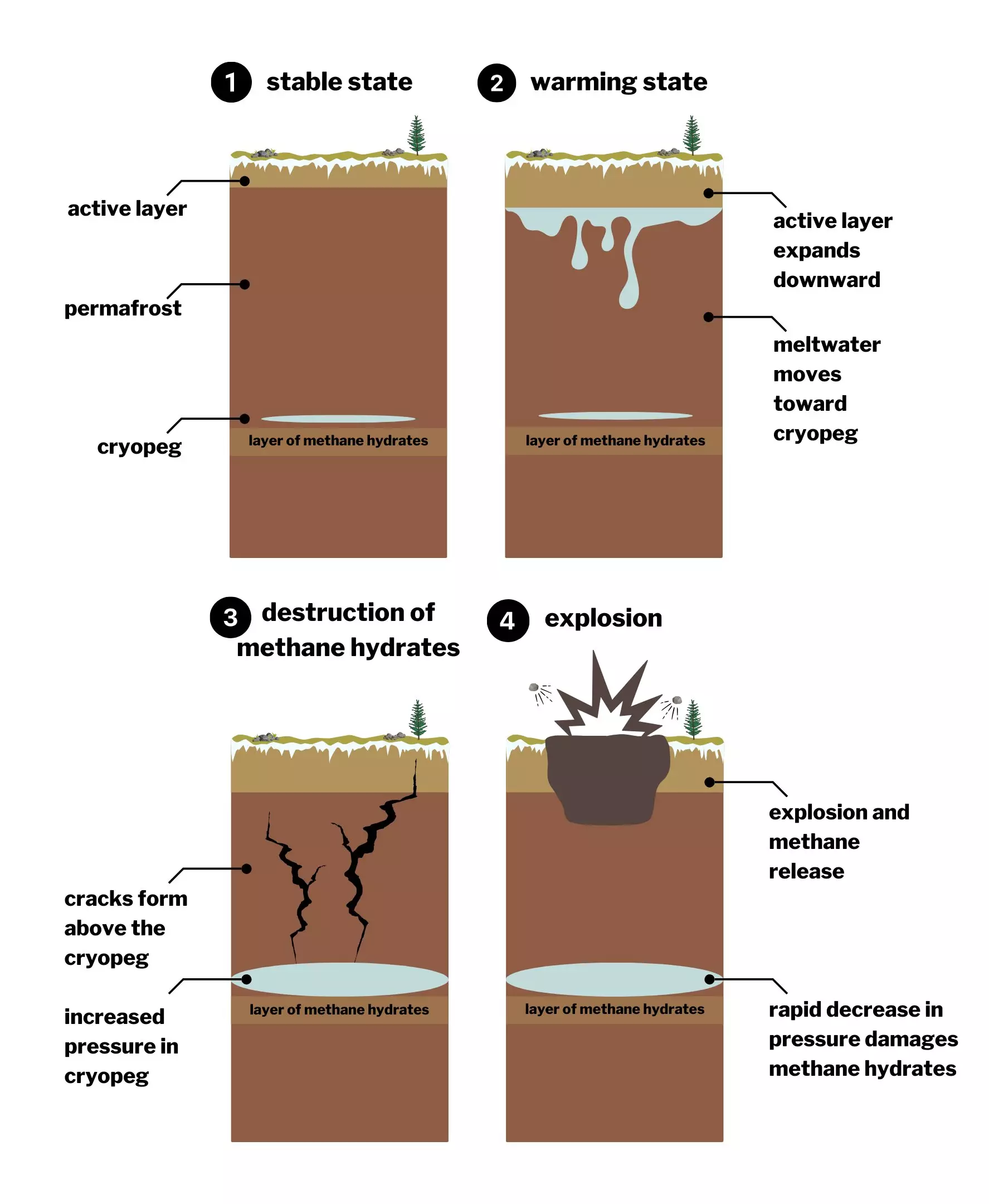In a remote corner of Siberia, the Yamal Peninsula has become a focal point for scientific inquiry since the sudden appearance of mysterious craters around a decade ago. These craters, initially perceived as oddities of nature, have sparked a myriad of theories regarding their origin. Recent research, as detailed in the journal *Geophysical Research Letters*, attributes these enigmatic formations to an intricate interplay between climate change and the unique geology of the region, specifically the explosive release of methane gas trapped in permafrost. This study sheds light on a pressing environmental mystery that illustrates the far-reaching consequences of a warming planet.
Permafrost, or permanently frozen ground, is a defining characteristic of the northern tundra, particularly in the Yamal Peninsula, where it plays a crucial role in the region’s ecosystem. Composed of various layers, this frozen ground typically remains solid throughout most of the year. However, climatic shifts have resulted in an unsettling transformation of this structure. As temperatures rise, permafrost begins to thaw, unleashing a cascade of geological reactions that lead to the destabilization of methane hydrates—crystalline structures containing frozen methane.
Research suggests that the mechanisms underlying the explosive craters are not merely the consequence of warming permafrost; instead, they are rooted in complex geological interactions. Ana Morgado, a chemical engineer involved in the study, emphasizes the rarity of the conditions required for these explosive events to occur, describing them as a “niche geological space.” The investigation into the Yamal craters reveals a previously unrecognized dynamic between climate change and the permafrost’s geological characteristics, emphasizing the importance of understanding local environments in the face of global warming.
The new findings challenge the notion that permafrost thaw alone could account for the explosive craters. The researchers embarked on a methodical investigation to discern whether physical or chemical processes were responsible for the explosions. Unlike chemical reactions, which are typically characterized by distinct transformative interactions, these explosions appear to align more closely with physical phenomena, akin to a bicycle tire bursting due to excessive air pressure.
The study proposes that osmosis serves as the “pump” driving the explosive events. In the Yamal region, salty layers of unfrozen water, known as cryopegs, exist beneath the thick permafrost. As climate change drives down temperatures, these cryopegs become critical players in the dynamics of the Yamal Peninsula. Melting permafrost induces a flow of water into the cryopegs, where the resultant increase in pressure creates fractures in the soil. These fissures can abruptly release pressure, triggering a series of explosive reactions involving the methane hydrates residing below.
This series of interactions underscores the delicate balance present in these geological structures and highlights how minor shifts due to climate change can culminate in significant and dramatic phenomena.
The research further connects the explosive mechanics to a broader historical context, linking these phenomena to an emerging trend of climate warming that began to intensify as early as the 1980s. As the active layer of the permafrost thaws, it has been releasing water that triggers this delicate chain reaction, ultimately culminating in explosive outcomes that have taken decades to materialize.
Understanding this timeline is crucial as it can inform predictions about future geological events. The destabilization of permafrost is not an isolated incident; rather, it serves as a vital signal of climate change’s advancing footprint in sensitive polar regions. The Yamal craters represent a unique phenomenon, illustrating the local geological specifics that contribute to such explosions; however, the underlying principles may extend beyond this peninsula, indicating potential risks in other permafrost regions across the globe.
The findings regarding these Siberian craters offer a compelling glimpse into the complex ties between climate change and geological activity. It is imperative that researchers continue to study the Yamal Peninsula and similar regions to understand better the ramifications of a warming world. As these explosive events serve as a harbinger of more significant climate impacts, their study could play a vital role in shaping policies aimed at mitigating climate change and safeguarding vulnerable ecosystems. The craters are not merely geological anomalies; they symbolize the urgent need to confront environmental challenges as they unfold in real-time.


Leave a Reply